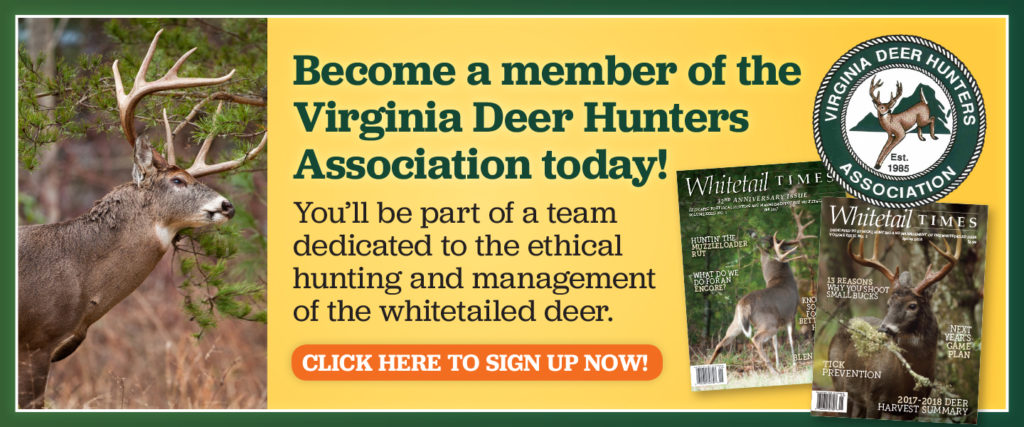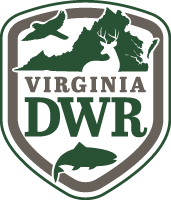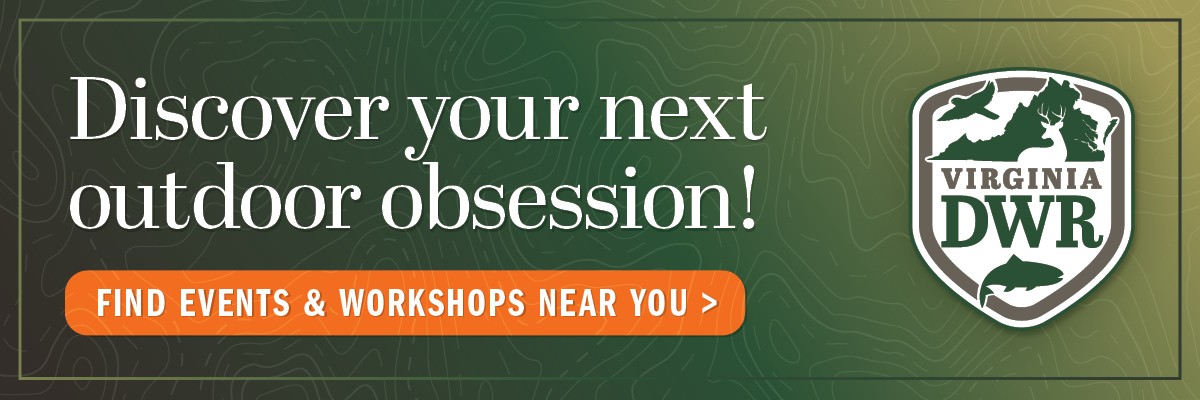By Bruce Ingram for Whitetail Times
Photos by Bruce Ingram
With hunter numbers declining and deer populations increasing across Virginia, more liberal doe harvest guidelines can be expected. The new 2025-2026 Hunting regulations for a longer antlerless firearm season in some western Virginia counties with high deer populations are set to meet objectives!
Virginia’s deer seasons have transformed a great deal over the decades, and now additional change has occurred. This past season, for example, the Virginia Department of Wildlife Resources (DWR) initiated an early September antlerless firearms season in Bedford, Carroll, Floyd, Montgomery, and Pulaski counties. And many counties increased their number of either-sex days during various seasons because of deer numbers growing.
Other domains increased whitetail hunting opportunities because of chronic wasting disease (CWD). To help sportsmen better understand why these changes have been necessary, I contacted Justin Folks, DWR’s Deer Project Leader.
“We lengthened the deer season in Bedford, not because of chronic wasting disease, being detected [CWD has not been found in Bedford], but because of a high deer population index that we haven’t been able to bring down to our objective,” Folks said.
“To manage deer herd size, we manage antlerless hunting opportunities. If the herd numbers are increasing above our objective, we typically start increasing either-sex (doe) days until its full-season either-sex,” he continued. “The next step is typically earn-a-buck (EAB), and if EAB doesn’t get us there, we’ll then add length to the season. The early and late antlerless-only seasons had only been for urban areas and CWD Disease Management Areas, but we recently started applying it to counties with long-term high deer population indices that we just quite haven’t been able to get down to our objective.”
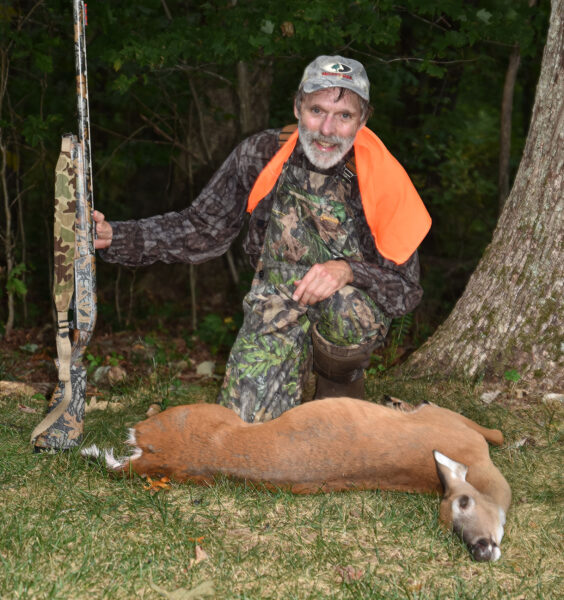
The author with a nice doe he harvested on the second Saturday of Bedford’s new September general firearms season. Bedford is one of the western counties with the new early antlerless only firearm season. Photo by Gary Arington
DWR deer population indices rank from low to high, and Folks added that if DWR had a “very high” ranking, Bedford would have qualified for it over the last 20 years. The four other counties mentioned earlier are in Disease Management Area (DMA) 3, because of the presence of CWD. They join Clarke, Frederick, Shenandoah and Warren (DMA1) and Culpeper, Fauquier, Loudoun, Madison, Orange, Page, and Rappahannock counties (DMA2) where CWD has been found or is nearby.
“In our DMA counties, we are trying to slow the spread of CWD,” Folks said. “The lower the density of the deer herd, the less likely CWD will spread. Plus, when we designate a county as DMA, we do more sampling of checked deer and get a better idea of the prevalence of CWD.”
Folks related that another advantage of a lower deer herd density is that it keeps CWD from becoming totally out of control. Experiences in other states have shown that once the prevalence rate of CWD reaches a certain threshold, very little—if anything—can be done to keep this affliction in check.
“Many hunters may think CWD isn’t real because they’re not seeing ‘zombie deer,’ but if you’re seeing them, it’s too late,” Folks emphasized.
Folks added, “Yet another point worth noting is that we here in Virginia are fortunate that baiting deer is illegal. Baiting whitetails with corn and other items certainly increases the chances of CWD spreading among a local herd.” Folks noted that deer biologists in states where baiting and feeding is legal, wish these practices were illegal.
Alexandra Lombard, DWR wildlife health coordinator, agreed with Folks and emphasized that it’s better for the deer themselves that they aren’t fed or baited. Lombard also made an important point to hunters about CWD.
“Don’t let CWD keep you from hunting,” she said. “We all want healthy deer to hunt, and fewer deer often means a healthier herd. And if testing is available in your county, make plans to take advantage of this service.
“Also, if your county is under CWD restrictions, make sure you have a plan on what to do with your deer if you harvest one. Contact local taxidermists and meat processors beforehand, for example. The latter is especially important because we’ve been losing deer processors. Be sure, as well, to follow local carcass regulations regarding transportation and disposal. Double-bagging deer parts in a trash bag is a good example of this.”
New Seasons Offer Opportunity
The new seasons not only offer state hunters the opportunity to help DWR better manage our state’s deer herd, but also provide the opportunity to assist Hunters for the Hungry (HftH). Director Gary Arrington explains how and what’s new with the organization.
“We’re struggling to sustain the number of servings for those people in need,” he said. “The reduction in the number of hunters is a problem, as is the issue of losing processors. We have 30 fewer processors than we did in 2018. Another thing the organization has noticed is that more people are trying to put two or three deer in the freezer instead of just one.
“If readers know of new processors or ones we might not be familiar with, please let us know,” Arrington noted. “People experiencing hunger is still an issue in Virginia and America. Some 25 percent of American adults are food insecure.”
The good news, though, said Arrington, is that surveys by such organizations as Responsive Management consistently show that Americans are strongly in favor of people hunting for food and of organizations such as HftH that help provide nourishment for those in need. Additionally, Arrington noted that the nonprofit has expanded its social media footprint and its website to communicate the organization’s needs and focal points. HftH always appreciates financial donations, donations of deer, and folks willing to volunteer, and currently is looking for individuals who are in the processing business.
Additionally, Arrington hoped that with the new September seasons, meat processors will open up for hunters, and deer will be donated to HftH so the organization can supply the much-needed high protein resource. “We need more deer to be donated, along with financial gifts, so that we can provide for and make a difference in the lives of those less fortunate,” Arrington said.
Another interesting update is that though this isn’t generally known, HFtH does accept bears. “We take bears on a case-by-case basis,” Arrington said. “Some processors won’t fool with them, others will. If a processor will break down a bear, we will pay for that. Often, feeding programs don’t want bear meat, feeling that their clients won’t like it. But the reality is that once many people try bear meat, they want more of it.”
A Bedford Outing with Gary Arrington
Bedford County definitely harbors a great many whitetails, but just like deer everywhere, they can be maddeningly difficult to pattern at times. That’s what Arrington and I found out when we spent the day pursuing this big game animal on opening day of the September deer firearms season last year. Although we hunted several places during the morning and evening hours (taking just a two-hour mid-day break), we never saw a doe the entire day.
The reason why, we surmised after sunset that day, was the intense heat. The temperature hovered near 90 degrees most of the afternoon, and the morning temperature quickly rose after an hour or two. Another reason, we believed, was that we spent too much time overlooking fields while on stand.
So when we met the next Saturday, the plan was to spend the morning hours on stand in a forest bordering a bedding area on one side and a soybean field on the other. The plan seemed solid, and we did see five deer. Unfortunately, three of them were bucks and the other two were does we bumped when we decided to change stand sites.
The other reason we chose a woodlot as a stand site was that Arrington and I wanted to take advantage of the first acorns dropping. I’ve spent a lot of September weekends participating in the Urban Archery season most years, primarily in Roanoke County. Many of the deer I’ve arrowed then had come to scarlet oaks and white oaks shedding acorns.
Our hopes buoyed by at least seeing deer during the morning hours, Arrington told me that a woman had recently called him and asked if he could come hunt the numerous does that were visiting her woodlot as well as ravaging her ornamental plants. The lady also added that her white oaks had produced copious amounts of acorns.
As we were debating where to go for the afternoon outing, Arrington gave me three options: hunt from a blind bordering a field with a bedding area behind the pop-up, take a stand between two woodlots with a soybean patch in the middle of the woodlot duo, or head for the land where deer were besieging the female with lots of white oak trees bearing acorns.
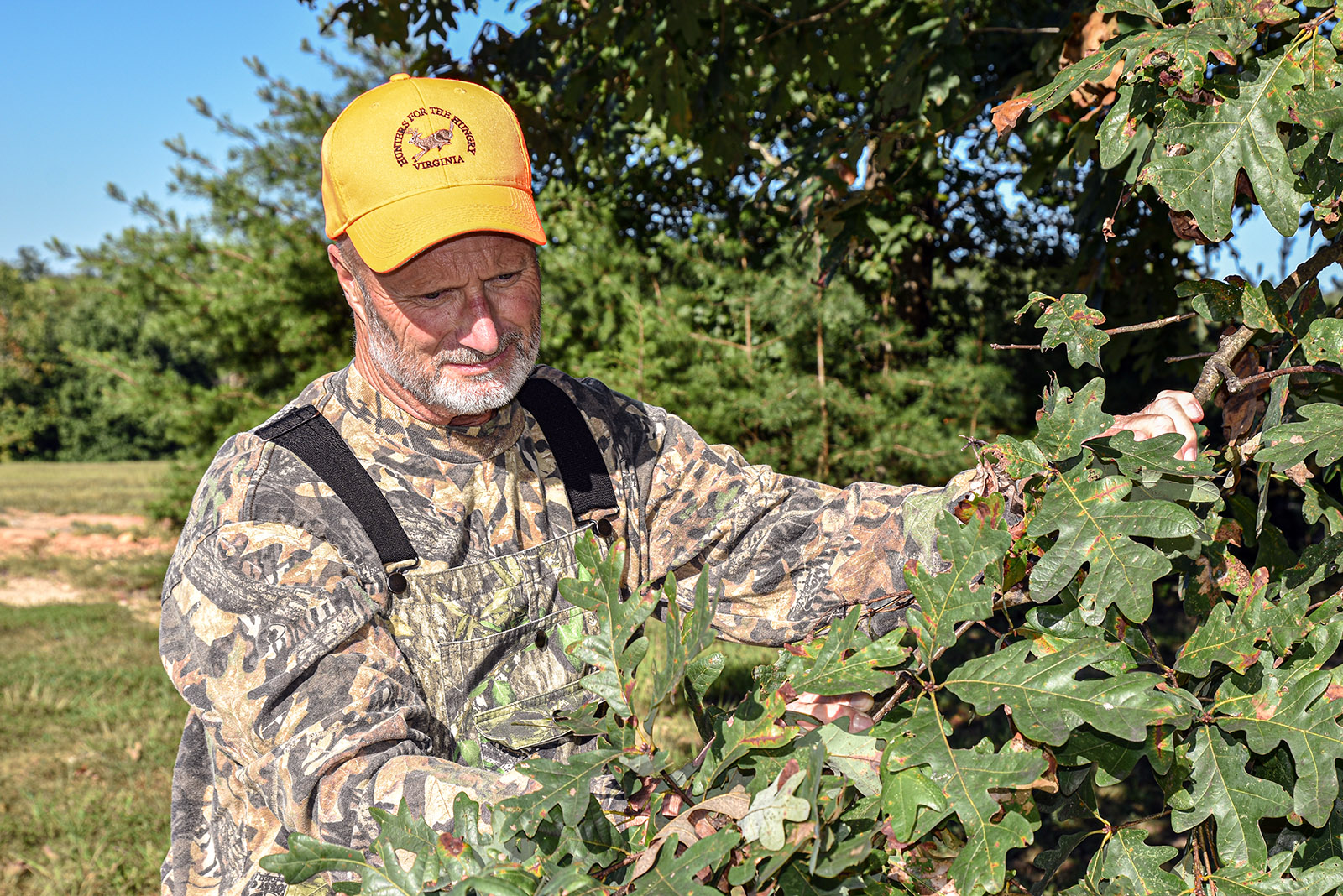
Gary Arrington, director of Hunters for the Hungry and an avid hunter, pictured checking out a post oak to see if it is bearing acorns. Just like in October, acorns are often the hot food source in September.
In my opinion, white oak acorns top every other whitetail food, especially when the nuts first start falling. What’s more, heavy rains were forecast for later in the day and a front was coming through. So I asked Arrington if we could head directly for the woman’s property and set up a blind immediately afterwards. We arrived a little after noon, quickly positioned a blind near a row of acorn laden white oak trees, and at 12:44 I levelled a nice mature doe with a load of buckshot from my 12 gauge. The 30-yard shot couldn’t have been easier.
So, give the new September firearms seasons a try. Keep a doe or two for yourself and consider donating a doe or two to Hunters for the Hungry.
Bruce Ingram, staff writer for Whitetail Times, lives in Fincastle, Virginia with his family. Ingram is a serious whitetail hunter and fisherman. His hunting and fishing articles have been published in state, regional and national publications. He has written four books on river smallmouth fishing. Bruce and his wife Elaine write a weekly outdoor blog that readers can visit at www.bruceingramoutdoors.com.
©Virginia Deer Hunters Association. For attribution information and reprint rights, contact Denny Quaiff, Executive Director, VDHA.
